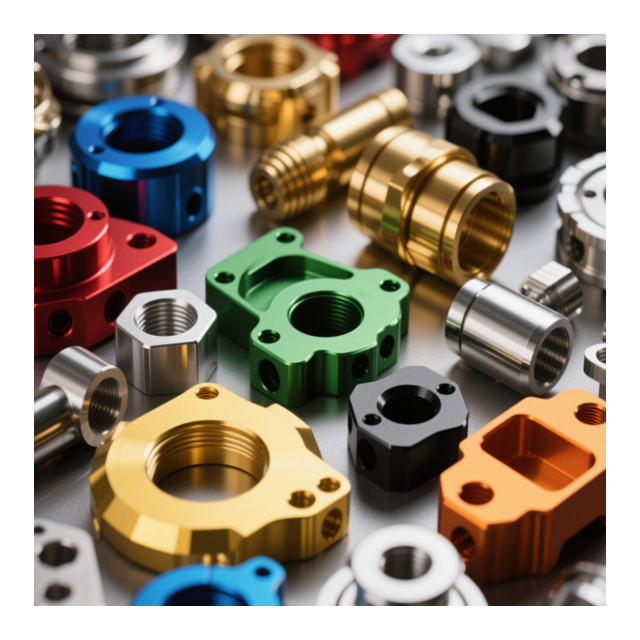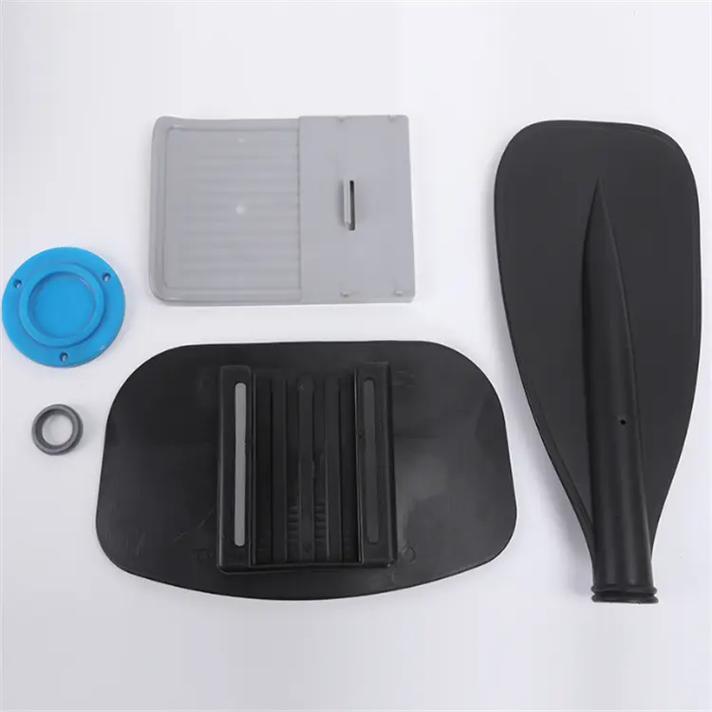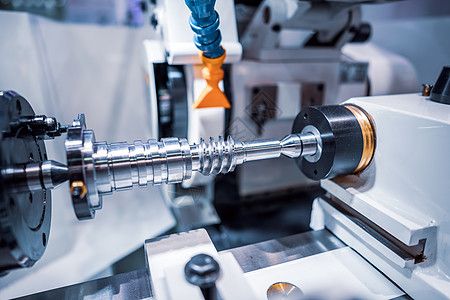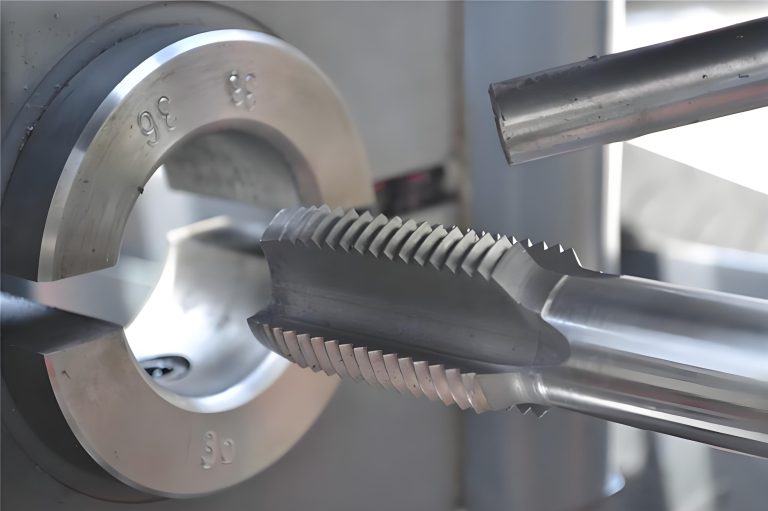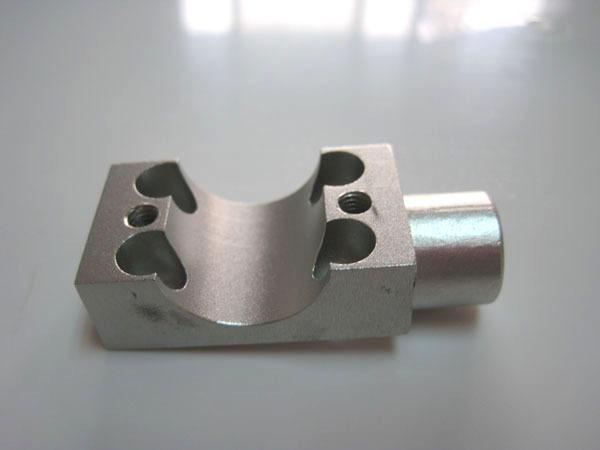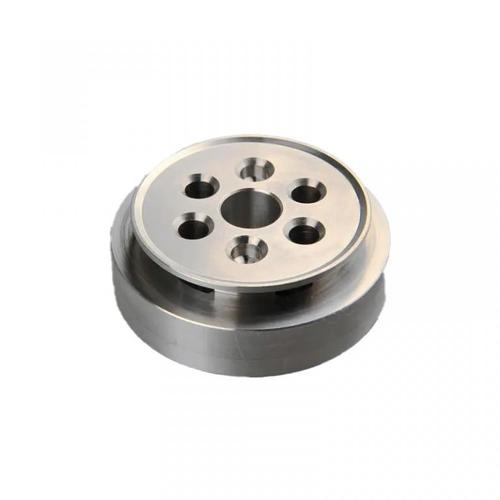I. Definition of Anodizing
Anodizing is a surface – treatment process that forms an oxide film on the surface of metals or alloys through an electrochemical method. In this process, the metal workpiece is used as the anode and placed in a specific electrolyte. After connecting direct – current or alternating – current power, an oxidation reaction occurs on the metal surface, generating an oxide film that adheres firmly to the substrate. Taking the anodizing of aluminum and its alloys as an example, in a sulfuric – acid electrolyte, aluminum atoms lose electrons and turn into aluminum ions that enter the solution. Oxygen ions in the solution combine with aluminum ions to form a porous aluminum – oxide film on the aluminum surface. This oxide film can not only significantly improve the corrosion resistance and wear resistance of the metal but also endow the material with different appearance and functional characteristics through subsequent treatments such as dyeing and sealing. It is one of the commonly used surface – treatment technologies in modern industry.

II. Key Points of Anodizing Technology
Composition and Concentration of the Electrolyte
Different metals and alloys are suitable for different electrolytes. For example, sulfuric acid, chromic acid, or oxalic – acid electrolytes are commonly used for aluminum and its alloys; a mixture of phosphoric acid and sulfuric acid is often used for titanium alloys. The concentration of the electrolyte directly affects the growth rate, porosity, and hardness of the oxide film. For instance, when the sulfuric – acid concentration is high, the oxide film grows rapidly but has a large porosity and a relatively loose structure. When the concentration is low, the oxide film grows slowly but has better hardness and wear resistance.
Oxidation Voltage and Current Density
The oxidation voltage and current density determine the rate of the oxidation reaction and the quality of the film. Increasing the voltage and current density can accelerate the growth of the oxide film, but if they are too high, the film may overheat, break down, and cause defects such as burning. If the voltage and current density are too low, the growth of the film is slow and the efficiency is low. These two parameters need to be precisely controlled according to the metal material, electrolyte composition, and film requirements.
Oxidation Time and Temperature
The oxidation time is directly proportional to the film thickness. However, an overly long oxidation time will increase the porosity of the film, reduce its hardness, and lower the production efficiency. The oxidation temperature also has a significant impact on the film properties. Generally, an oxide film formed at a low temperature has high hardness and good wear resistance, while a high temperature may cause the film to be loose and easily soluble. For example, for the sulfuric – acid anodizing of aluminum, the temperature is usually controlled between 15 – 25℃, and the oxidation time varies from 20 – 60 minutes depending on the required film thickness.
Post – treatment Processes
The anodized film has a large number of pores and needs to be sealed, such as hot – water sealing, steam sealing, inorganic – salt sealing, etc., to improve the corrosion resistance and anti – pollution ability of the film. In addition, the dyeing process can endow the oxide film with different colors to meet decorative requirements. During the dyeing process, the dye concentration, temperature, and dyeing time need to be controlled to ensure uniform and firm color.
III. Anodizing Processing Flow
Workpiece Pretreatment
First, degrease the metal workpiece to remove surface oil and grease, usually using alkaline degreasing agents or organic solvents. Then, perform chemical polishing or mechanical polishing to improve the surface finish. Finally, carry out pickling to remove the oxide scale and impurities on the workpiece surface, activate the metal surface, and prepare for anodizing.
Anodizing
Place the pretreated workpiece as the anode in an electrolytic cell filled with the electrolyte, select a suitable cathode (such as a lead plate or stainless – steel plate), connect the power supply, and carry out the oxidation reaction according to the set oxidation voltage, current density, temperature, and time to form an oxide film on the workpiece surface.
Dyeing (Optional)
If a specific color is required for the workpiece, immerse the anodized workpiece in the dye solution. Through adsorption and complexation, the dye molecules enter the pores of the oxide film to form a film layer of different colors.
Sealing Treatment
The dyed workpiece or the directly anodized workpiece needs to be sealed. Taking hot – water sealing as an example, immerse the workpiece in deionized water at a temperature of 95 – 100℃ for 15 – 30 minutes. The water molecules in the pores of the oxide film react with aluminum oxide to form hydrated aluminum oxide, filling the pores and improving the film performance.
Post – treatment and Inspection
Clean and dry the sealed workpiece to remove the remaining solution on the surface. Finally, inspect the quality of the anodized film through methods such as visual inspection, film – thickness measurement, and corrosion – resistance testing (such as salt – spray testing) to ensure it meets the standard requirements.
IV. Processable Materials for Anodizing
Non – ferrous Metals and Their Alloys
Aluminum and Aluminum Alloys: They are the most widely used materials for anodizing. Because a dense aluminum – oxide film can be easily formed on their surface, and the oxide film has a good bond with the substrate. Anodizing of aluminum and aluminum alloys is extremely common, from building door and window profiles to automotive parts and electronic – product casings.
Magnesium and Magnesium Alloys: Anodizing can improve their poor corrosion resistance and is often used for lightweight parts in the aerospace and automotive manufacturing fields.
Titanium and Titanium Alloys: Anodizing can produce oxide films of different colors, which not only have good decorative properties but also improve their biocompatibility. They are widely used in products such as medical devices and spectacle frames.
Some Ferrous Metals
For example, steel materials can also form an oxide film with certain protective effects through special anodizing processes (such as chromate anodizing). However, compared with non – ferrous metals, the application of anodizing for steel is relatively less.
V. Characteristics of Anodized Parts
Excellent Corrosion Resistance
The oxide film formed by anodizing is dense and can effectively isolate the metal from the external environment, preventing the intrusion of corrosive media. For example, anodized aluminum – alloy doors and windows can remain rust – free and corrosion – free for a long time in outdoor environments.
Good Wear Resistance
The oxide film has a high hardness, which can significantly improve the wear resistance of the part surface. Applying anodizing treatment to mechanical parts, sports equipment, and other products can extend the service life of the parts.
Diverse Decorativeness
Through the dyeing process, the anodized film can present rich colors and textures to meet different decorative needs. Mobile – phone casings, furniture hardware, etc., often use the decorative characteristics of anodizing to enhance the appearance quality of products.
Insulation and Thermal Insulation
The oxide film is non – conductive and has poor thermal conductivity. It can be used as an insulating material in the field of electronics and electrical appliances and can also play a role in some occasions where heat insulation is required.
VI. Application Fields of Anodizing Processing
Building Decoration Field
Anodized aluminum – alloy doors, windows, and curtain – wall profiles are beautiful, durable, and corrosion – resistant, and are widely used in various buildings. In addition, anodized metal decorative strips, handrails, etc., add a unique decorative effect to the building.
Electronics and Electrical Appliances Field
The casings of mobile phones, tablets, laptops, and other electronic products often adopt the anodizing process, which not only ensures an exquisite appearance but also improves wear resistance and fingerprint – resistant performance. In electronic components, the anodized film can also be used as an insulating layer.
Automotive Manufacturing Field
Automotive wheels, interior parts (such as dashboard decorative strips, door handles), engine parts, etc., are treated by anodizing to improve corrosion resistance and aesthetics. At the same time, anodized lightweight metal parts contribute to the energy – saving and emission – reduction of automobiles.
Aerospace Field
Parts made of magnesium alloys, titanium alloys, etc., after anodizing treatment, can enhance corrosion resistance and surface hardness while ensuring lightweight, which are suitable for key parts such as aircraft structural parts and engine components.
Daily – use Products
Products such as tableware, kitchenware, spectacle frames, and watchbands use the anodizing process to achieve personalized appearance design and good performance.
VII. Technical Description of Anodizing Processing
Anodizing technology is a surface – treatment technology that combines the improvement of metal – material properties and decorative effects and plays an important role in modern industrial production and daily life. Its principle is based on an electrochemical oxidation reaction. By precisely controlling process parameters, oxide films with different properties and appearances can be obtained. Compared with other surface – treatment technologies, anodizing has advantages such as a firm bond between the film and the substrate, relatively low cost, and the ability to achieve large – scale industrial production.
With the development of science and technology, anodizing technology is also constantly innovating. For example, micro – arc oxidation technology (MAO) forms a thicker and harder ceramic – like oxide film by making the metal surface undergo micro – arc discharge at a higher voltage, expanding the application of anodizing in the fields of high – wear resistance and high – corrosion resistance. Pulse anodizing technology uses pulsed current instead of traditional direct current, which can improve the microstructure of the oxide film and enhance the film quality. In the future, anodizing technology will continue to develop in the directions of environmental protection (reducing electrolyte pollution), high – performance (developing new electrolytes and processes), and multi – functionality (such as preparing oxide films with self – cleaning and antibacterial functions), providing strong support for product upgrades in various industries.
The above content provides a detailed introduction to anodizing. If you want to have an in – depth understanding of a certain part or add content for specific application scenarios, you can talk to me at any time.

